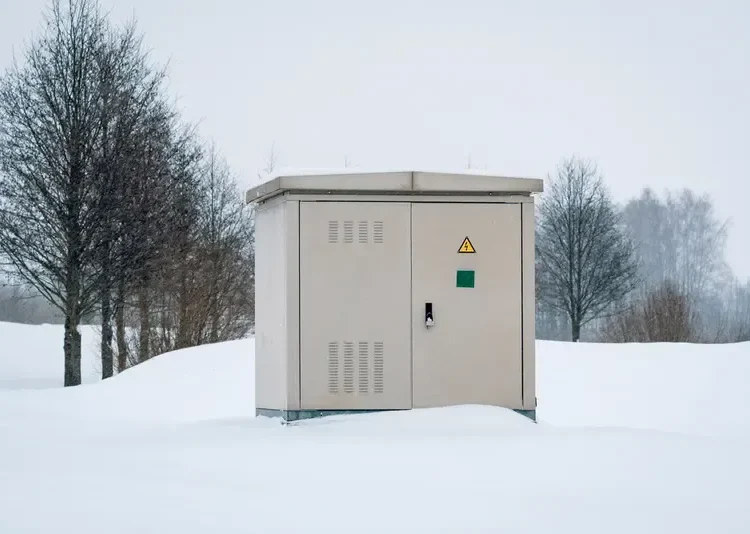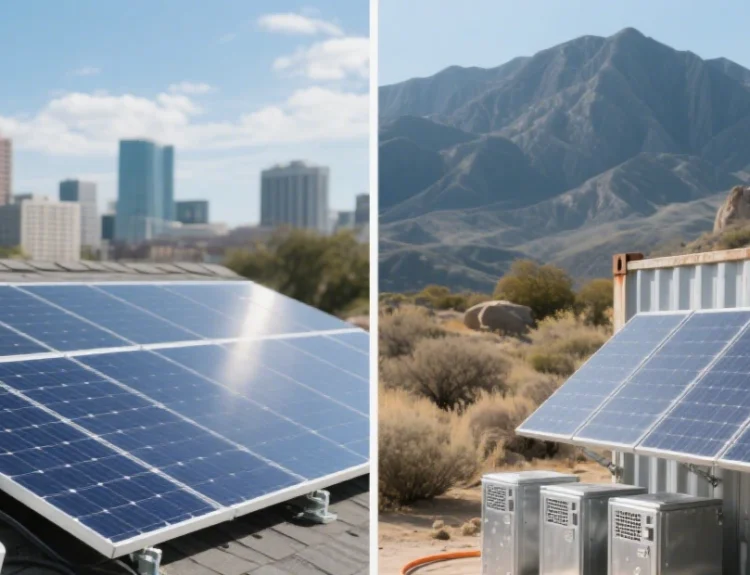About Solar Array Upper Creek Awrc
The Upper Creek AWRC is a state-of-the-art, environmentally-sensitive water recycling facility committed to water recycling and conservation. In an effort to minimize carbon emissions and improve energy efficiencies, the facility is actively utilizing renewable energy technologies including those that generate solar power. Currently, the AWRC is being upgraded by installing large-scale solar arrays to power the facility. This promotes environmental sustainability and realizes cost efficiencies. These solar arrays convert sunlight into electricity, thus providing AWRC with green energy, reducing the use of fossil fuels, and effectively lowering carbon emissions.
In other words, with the installation of solar arrays, the Upper Creek AWRC reduced its reliance on the traditional power grid and enhanced renewable energy applications for community response to climate change. This environmentally friendly initiative not only reduces carbon emissions but also improves air quality due to reduced reliance on fossil fuels, providing an example of how other water treatment facilities could incorporate renewable energy.
Meanwhile, the installation of the solar array meant long-term savings for AWRC, and the project as a whole was a responsible investment for the long-term sustainability of the facility. Perhaps in time, the success of such a project will encourage more water treatment plants to consider renewable energy; certainly, such an approach would be important to the continuing health of the planet as well as keeping water supplies efficient.
Introduction to Solar Arrays
Having learned about the benefits accruing from the Upper Creek AWRC solar array, you must have developed a very strong interest in solar arrays, so let’s take a closer look at everything.
A solar array is a collection of solar panels that capture sunlight and turn it into electricity. These panels work in conjunction with a solar inverter and optional batteries to form a complete solar power system. Solar panels are photovoltaic solar cells covered with protective glass and fixed in a metal frame. These cells are made of semiconductor material, usually silicon, which converts photon energy into electrical current due to the photovoltaic effect. Solar cells generate electricity through the photovoltaic effect: photon energy from sunlight causes electrons in the silicon material to break away from atoms, creating an electric current; hence, solar panel systems are called photovoltaic systems.
Solar arrays can be sized according to power requirements:
Domestic arrays: about 15 400W solar panels are needed, totaling about 6 kilowatts.
Large Arrays: Composed of thousands of panels and generating up to 1 MW or more. The size and makeup of a solar array can be quite flexible to accommodate different levels of power demand.
How Do Solar Arrays Work?
Solar arrays are groups of solar panels that are installed together to generate electricity. These photovoltaic cells, when sunlight hits them, excite electrons and hence produce direct current. These are connected with one or more inverters that convert the DC power into AC, which is available for the home. In simple terms, solar arrays convert energy from the sun into electricity that can be used in homes or sent back into the grid.
Here is a simplified explanation of how a solar array provides a residence with electricity:
Energy Creation: Sunlight hits the photovoltaic cells, and that creates DC electricity.
Energy Conversion: The DC power is converted to AC power through an inverter.
Energy Consumption: Now the AC power is ready to use within the home or can be sent onto the grid for others to use.
Due to the durability of solar panels, they can continue to generate energy for up to 25 years or more without moving parts, fuel, or additional intervention from the homeowner.
What is the impact of solar panels placed in different geographic locations?
Numerous considerations are usually necessary for the installation of solar panels to maximize energy output. In the northern hemisphere, many solar panels are installed facing south on the roofs due to their exposure to the sun. If you have enough land, though, then ground-mounted systems can be equally good since you can easily change the orientation and tilt to adjust them for optimal sunlight reception at any time of the day for maximum power generation.
Other than roofs, solar panels could also be mounted on other structures like carports and gazebos, but these are rather rare installations that may require special installation services and are relatively expensive. Other creative locations for the mounting of solar panels are the tops of vehicles, especially very applicable to RVs and boats, and off-grid environments where mostly energy storage systems are paired together.
Solar panels can also be incorporated into the building, like solar canopies, solar pergolas, and solar trees, adding green energy while serving as shade and ornamentation for a building. Therefore, the location of solar panels shall be considered based on geographic location, space availability, and structural conditions so that maximum energy output and consequently economic benefits can be achieved.
How to Calculate the Number of Panels to Build a Solar Array
The major steps involved in calculating the number of panels to install for a solar array installation are
Estimate the daily energy requirement: Study the historical data for electrical usage or forecast forward the amount of energy consumed every day.
Consider system efficiency and radiation: Calculations should be made with panel conversion efficiency, inverter efficiency, and system losses, taking into account the local average daily solar radiation.
Estimate solar panel output: Calculate the daily output based on the power of selected panels and the estimated number of hours of sunshine.
Calculate the number of panels needed: divide the daily energy requirement by the product of the panel power and the number of hours of sunlight. Suppose that the energy required is 30 kWh per day, 300 watts per panel, and the number of hours of sunlight is 5, then 20 panels would be needed.
System Losses: About 25% more panels are usually recommended to make up for any energy loss in the system.
Fine-tune the system design: Consider factors such as average regional sunlight, surrounding shadows, roof size and angle to accurately estimate system size.
A typical home may require 17 to 21 solar panels to meet its full power needs, but the exact number is influenced by factors such as electricity rates, geographic location, and panel placement. This means solar panels in California will produce more electricity than in New York because of the ample sunlight. A south-facing roof will get the best sunlight, whereas an east/west-facing roof may require more panels to achieve the same output. If necessary, consult a professional, and based on these factors, the installer will design the solar system for optimal production.
Can You Install Multiple Solar Arrays on Your Home?
Of course, higher electricity demand can be met or increased power generation can be achieved by installing more than one solar array and interconnecting them to work together in to powering power the same meter. Such a configuration would boost the generating capacity of the system but may also raise the installation cost as more labor and materials will be needed. For multiple arrays facing different directions, a power optimizer or microinverter may be required as an inverter solution. These devices, also known as module-level power electronics (MLPE), help complex solar panel systems generate electricity efficiently by optimizing the power output of each individual panel. Compared to traditional centralized or string inverters, MLPE technology prevents a poorly performing panel from reducing the output of other panels on the same circuit, thereby increasing the power generation efficiency of the entire system.
How much do solar arrays cost?
The average cost of a complete home solar panel system in the United States ranges from $18,000 to $20,000. This is based on a pre-incentive cost of $2.75 to $3.35 per watt of solar installation. Of this total cost, the equipment cost for the solar array itself ranges from approximately $5,800 to $7,850. The rest of the cost consists mainly of the solar inverter cost and the cost of installation itself.
The general estimate for one solar inverter is about $1,500 to $3,000, though it might vary with inverter types, hybrid inverters being most expensive and string inverters less expensive. Installation costs depend on a number of factors, roof type, system location, and electrical system requirements. According to the National Renewable Energy Laboratory, the average installed cost of solar panels in the U.S. is around $3.05 per watt. Thus, installation costs for a typical 6-kilowatt solar panel system could fall within the range of $12,000 to $18,000.
These cost figures give a general budget range, but actual costs may vary by region, system size, and specific installation conditions. Simultaneously, these costs can be further reduced by considering solar incentives offered by the U.S. federal and state governments, such as tax credits, rebates, and performance-based incentives.
Benefits of Installing a Solar Array for Homeowners
Regarding what can be accomplished for the homeowner by installing solar arrays, installation offers huge benefits. Having a home in a fairly sunny location can greatly decrease or, in some situations, entirely eliminate electricity bills. Similarly, a solar system could help increase property values, making it no less than a value-added renovation. This, in particular, reduces carbon footprints that are part of the creation and use of solar energy – an energy source not harmful to the environment. Solar arrays further provide energy independence and reduce dependence on the traditional power grid, especially in areas where the grid is unstable.



